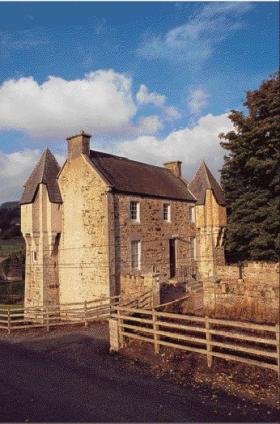Ballyduff barrack
Published in 18th–19th - Century History, Features, General, Issue 6 (Nov/Dec 2008), Volume 16 In 1831 legislation was enacted at Westminster to consolidate Irish public works departments under a new body, the Commissioners of Public Works in Ireland, commonly known, like its Georgian predecessor, as the Board of Works. It was not until after the retirement of its first architect, the Welshman Jacob Owen, in 1856 that its remit was extended to building police barracks nationwide. Progress was slow, and as late as 1878 the overwhelming majority of the 1,465 barracks in the country were still in rented premises, only 45 being under the Board’s charge. Owen, whose fourteen surviving children included several architects, had arranged for one of them, James Higgins Owen, to succeed him. Later, in 1863, an assistant architect, the apparently unrelated Enoch Trevor Owen, was appointed.
In 1831 legislation was enacted at Westminster to consolidate Irish public works departments under a new body, the Commissioners of Public Works in Ireland, commonly known, like its Georgian predecessor, as the Board of Works. It was not until after the retirement of its first architect, the Welshman Jacob Owen, in 1856 that its remit was extended to building police barracks nationwide. Progress was slow, and as late as 1878 the overwhelming majority of the 1,465 barracks in the country were still in rented premises, only 45 being under the Board’s charge. Owen, whose fourteen surviving children included several architects, had arranged for one of them, James Higgins Owen, to succeed him. Later, in 1863, an assistant architect, the apparently unrelated Enoch Trevor Owen, was appointed.
E. T. Owen was born in Shropshire and brought up in Liverpool, where his father was a shopkeeper. He was in private practice in England before joining the Board as a drawing clerk in 1860. From 1863 he was effectively the Board’s chief designer, while James Owen acted administratively. After the Fenian Rising in 1867, the Board took immediate steps to design new police barracks capable of defence. These were not publicly announced until January 1870, however, when perspectives of a ‘sketch design for a second class Royal Irish Constabulary Barrack’, devised by the two Owens and bearing the date February 1868, were published in The Irish Builder. Between 1869 and 1872 a dozen barracks of varying sizes and degrees of fortification were built. No two were alike. Among the earliest were Ballyduff (1869–70) and Errismore (1870–1), Co. Galway, each designed to house a head constable and five men. Both had diagonally opposed twin towers, designed to provide raking fire along all four walls and to protect the front and back entrances.
Larger and more elaborate baronial barracks were built in Cahirciveen (1871–2; burnt in 1922, rebuilt as a heritage centre in 1991–6), Rochfort Bridge and Skibbereen (both destroyed). In addition, five fortified coastguard stations were erected in 1869/70 before the programme was abruptly terminated by the Treasury in 1872, following a confidential report compiled by a committee chaired by the marquess of Lansdowne. It considered that
‘. . . the expense might be greatly reduced if there were less attempt at architectural display . . . the prevalent policy of making those buildings defensible, as to which we offer no opinion, certainly adds to their cost, but it is a matter for consideration whether this might not be done more cheaply than with machicolated towers. It is hard to understand too, why, if a common dwelling house with iron shutters be considered sufficient in the county of Westmeath, fortified castles should be required in such towns as Killarney and Dungannon.’
Frederick O’Dwyer is a senior architect in the Department of the Environment, Heritage and Local Government. Series based on the National Inventory of Architectural Heritage’s ‘Building of the month’.
















